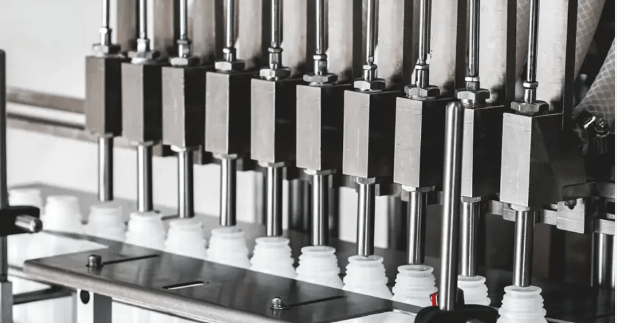Precision and Efficiency: Exploring Liquid Filling Machines

Liquid filling machines are essential tools in many industries, ensuring liquids are filled into containers accurately and efficiently. Whether it’s pharmaceuticals, food and beverage, cosmetics, or chemicals, these machines play a key role in maintaining operational efficiency and product quality.
Different Types of Liquid Filling Machines
Liquid filling machines come in various types, each designed to meet different needs and scales of operation. These types include:
- Manual Liquid Filling Machines: Ideal for small-scale operations, these machines require human intervention to fill containers.
- Semi-Automatic Liquid Filling Machines: These machines blend manual and automatic processes, offering greater efficiency for medium-scale operations.
- Automatic Liquid Filling Machines: Perfect for large-scale production, these machines operate with minimal human intervention, providing high-speed and precise filling.
How Liquid Filling Machines Work
Liquid filling machines operate using different principles to handle various liquids and container types. The main operating methods include:
- Gravity Filling: Uses gravity to fill containers with low-viscosity liquids like water and juices.
- Volumetric Filling: Measures a specific volume of liquid before filling, ensuring precise amounts for each container.
- Pressure Filling: Uses air pressure to fill containers, suitable for thick or foamy liquids.
Key Features and Components
Modern liquid filling machines come equipped with advanced components to ensure smooth operation and prevent contamination. Some of these key features include:
- Programmable Logic Controllers (PLCs): Control the filling process with high precision.
- Nozzles and Valves: Ensure accurate and consistent liquid flow.
- Sensors: Monitor the filling process to maintain quality and efficiency.
Choosing the Right Liquid Filling Machine
Selecting the right liquid filling machine involves considering several factors:
- Production Volume: The amount of product you need to fill within a specific timeframe.
- Liquid Properties: The viscosity and nature of the liquid being filled.
- Container Size and Type: The dimensions and materials of the containers.
- Budget: Balancing cost with the desired features and capabilities.
Maintenance and Care
Proper maintenance is crucial to ensure liquid filling machines operate efficiently and last longer. Key maintenance practices include:
- Regular Cleaning: Prevents contamination and ensures hygienic operation.
- Scheduled Servicing: Keeps the machine in optimal condition and reduces downtime.
- Component Checks: Regularly inspect and replace worn-out parts to maintain performance.
Industry Applications and Success Stories
Liquid filling machines are used across various industries, contributing to increased efficiency and product quality. Some notable applications include:
- Pharmaceuticals: Ensuring precise dosing and contamination-free packaging of medicines.
- Food and Beverage: Efficiently filling bottles and containers with liquids like juices, sauces, and oils.
- Cosmetics: Accurately filling bottles and tubes with lotions, shampoos, and other beauty products.
- Chemicals: Safely and accurately filling containers with cleaning agents, solvents, and other chemicals.
Future Trends and Innovations
The future of liquid filling machines is bright, with several exciting trends and innovations on the horizon:
- Automation and Robotics: Increasing the speed and accuracy of filling processes.
- Sustainability: Developing eco-friendly machines that reduce waste and energy consumption.
- Smart Technology: Implementing advanced sensors and software for predictive maintenance and improved efficiency.
Take Away
Liquid filling machines are vital for industries that require precise and efficient filling of liquid products. From pharmaceuticals to food and beverage, cosmetics, and chemicals, these machines ensure operational efficiency and product quality. As technology continues to advance, we can expect even greater innovations in the field of liquid filling, making these machines indispensable for modern production processes.







